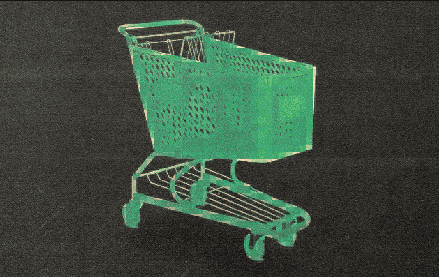How influencer agencies vet and navigate past fake influencers and followers

As a Digiday+ member, you were able to access this article early through the Digiday+ Story Preview email. See other exclusives or manage your account.This article was provided as an exclusive preview for Digiday+ members, who were able to access it early. Check out the other features included with Digiday+ to help you stay ahead
With the rise of virtual influencers and generative artificial intelligence content creeping into the influencer world, it can get complicated for influencer agencies to navigate partnerships and verify the authenticity of their followings and engagement metrics those influencers claim to attract.
Not helping matters, a number of social media services, including Viralyft and Twicsy, sell followers, likes or views directly to creators and businesses wanting to boost their clout. Some of that traffic is made up of bots.
So how do agencies know what’s real?
In 2021, 49% of all Instagram influencers worldwide had used fake followers at some point, per analytics platform HypeAuditor. The fake following issue was estimated to cost brands some $1.3 billion in 2019 — not a ton of money, but still substantive for what then was a still-nascent business.
More than anything, agencies say it is important for the health of relationships between brand and creator to develop a clear-cut strategy as the space evolves. James Brownstein, founder and general manager at influencer agency Poster Child, said the agency does not rely on using services to boost their creators. Doing so, in his mind, threatens the influencer marketing industry.
“Buying engagement or followers is a hard no in my opinion, and is essentially sacrilegious in the influencer marketing world,” Brownstein said. “If engagement on a post isn’t real, and this becomes a commonplace tactic, brands won’t get any ROI and will stop spending on influencers.”
Here are some more ways agencies are tackling authenticity and engagement challenges in influencer marketing.
Combining tools with instinct
Unlike services such as Integral Ad Science or DoubleVerify that identify and, ostensibly, weed out programmatic fraud, influencer agencies say there aren’t many similar, single tools that exist yet for differentiating legitimate influencers and their engagement or followings.
Bea Iturregui, vp of creator and brand partnerships at creator marketing agency Cycle, said she currently employs a blend of quantitative and qualitative strategies to assess influencers.
“For example, our tool has a specific function that indicates if someone has below average engagement — which can be an indicator they purchased followers — but also tells us what percentage of their audience is actively engaging on a regular basis,” Iturregui explained.
Sarah Gerrish, senior director of creator and influencer at Stagwell agency Movers+Shakers, agreed that a combination of quantitative methods and manual research usually gets the job done. Using Creator IQ as an initial assessment, the team can discover potential partners and find an active audience score, a feature that analyzes influencer metrics like follower counts and engagement rates and can flag potential fake followers.
Manually, the team then further evaluates a partner for content quality, engagement rate benchmarks, comments on their posts and audience location.
“Because sites like Viralyft or Twicsy can provide likes, comments and engagement metrics, we cannot only use engagement rate as our benchmark,” Gerrish added. “We analyze the geographical distribution of the influencer’s audience to ensure alignment with our target demographics. A significant proportion of followers from a location that differs from the influencer’s location or background can also be an indicator of fake followers.”
Brownstein added that because there is “no reliable tool” to simply determine if the following is legitimate, it’s on the agency to “deeply understand the internet.” While some services can show engagement rates and other topline metrics, they do not measure the “look and feel” of knowing whether an influencer has built a real following — so part of this also comes down to experience and online knowledge.
“It comes from being chronically online and being ingrained in the industry,” Brownstein said.
Vetting process
Joey Chowaiki, COO and co-founder of creator marketing firm Open Influence, said part of the verification process involves audience and engagement authenticity scores. Open Influence uses first-party data in the vetting period to decide whether to work with a creator, and continues monitoring average impression rates and reach of their content.
“If an influencer’s posts consistently show very low engagement compared to their follower count, it raises a red flag about the authenticity of their followers,” Chowaiki added. “On the flip side, we also look for suspicious metrics, such as likes and comments exceeding post impressions, indicating engagements may have been inflated with a service.”
Influencer agency Billion Dollar Boy employs an internal influencer marketing platform called Companion to verify a creator before recommending them to a client, said Irving Shark, head of product at Billion Dollar Boy and Companion. Companion is able to search for creators and analyze their profiles for images, follower details, ratio of followers and post counts.
“When analyzing follower details, Companion’s AI tools can determine the percentage of real followers that a creator has and provide that number to the user,” Shark explained. “A combination of technology and human intervention is crucial to ensuring we can enforce the highest quality due diligence.”
Finding patterns
Iturregui mentioned using additional methods to track follower growth over time — which can provide a good reference point to see if there have ever been unusual spikes or massive growth without explanation.
She said not to rely entirely on tools and data — manual scrapes need to be part of the process too. This can include looking for patterns like the use of the same emojis or similar comments and keywords repeated in the content.
“It can be a sign that there has been some sort of accelerator [service] purchased,” Iturregui said. “Consider a clause in standard agreements that explicitly states the influencer has not previously purchased and will not purchase any followers, engagements or views.”
Chowaiki also mentioned using the agency’s brand safety tool to sort through a creator’s feed and find patterns or posts that may contain “religious, political, sexual, violent, or otherwise obscene content.”
“In addition to looking at metrics, we also look at the quality and sentiment of interactions on content, ensuring there are real humans generating real conversation and dialogue as opposed to bot-oriented or suspicious activity,” Chowaiki said.
More in Media Buying

Influencer marketing firm Captiv8 looks to grow social commerce with brand storefront offering
Influencer marketing firm Captiv8 this week launched a brand storefront offering to expand creator commerce opportunities beyond social media.

Omnicom wraps Cannes with an Instacart API deal to buy directly off influencer content
Omnicom said it’s building a new platform to enable this functionality across social media platforms, which will be ready by this fall and will be able to attribute orders purchased to a specific creator activation for their clients, via Omnicom’s Flywheel commerce cloud.

Omnicom’s Flywheel gets certified with TikTok Shop as it ties creators to sales results
Omnicom and Flywheel can connect creator content to sales, another example of the holding company striving to move beyond media metrics to reach sales metrics for its clients’ investments.







